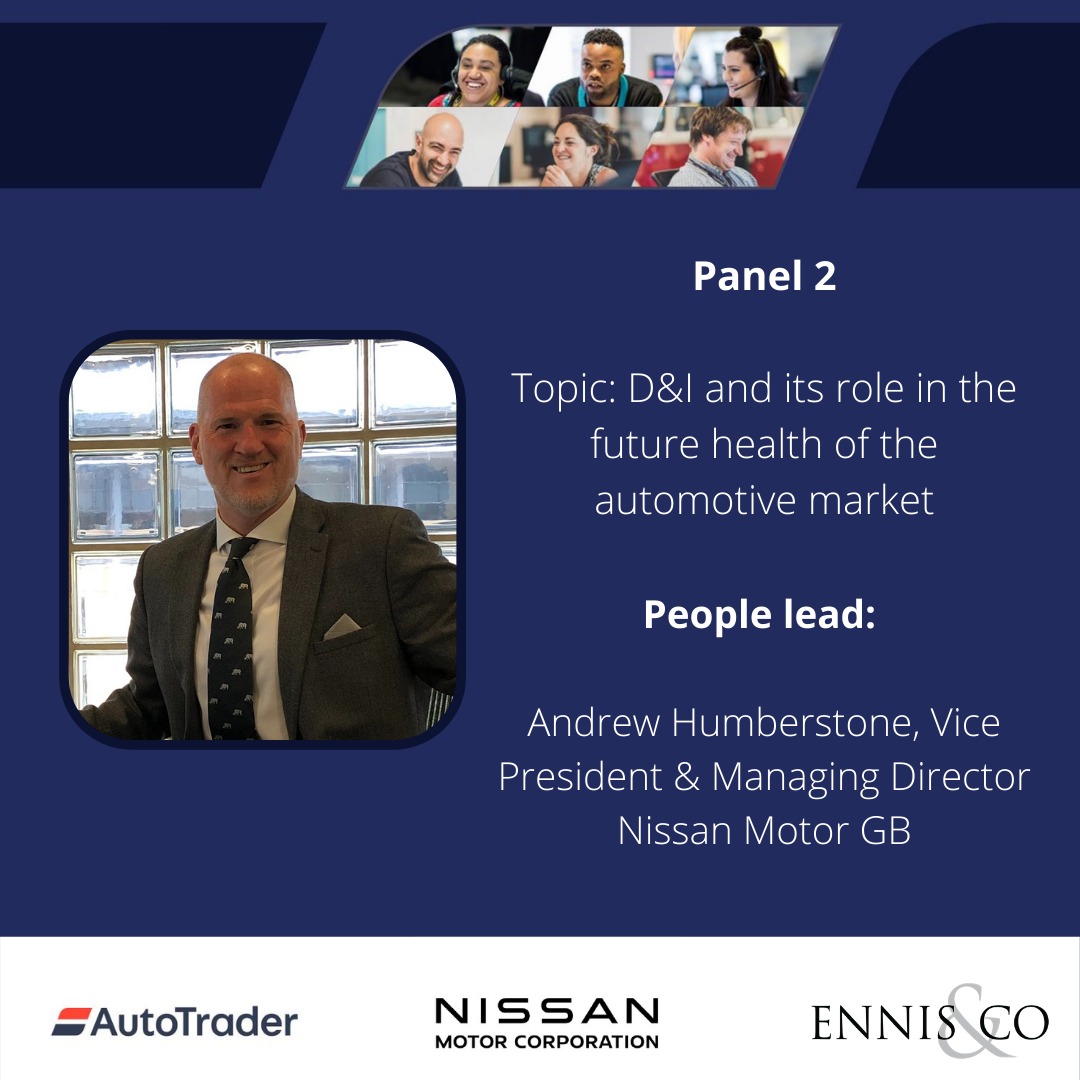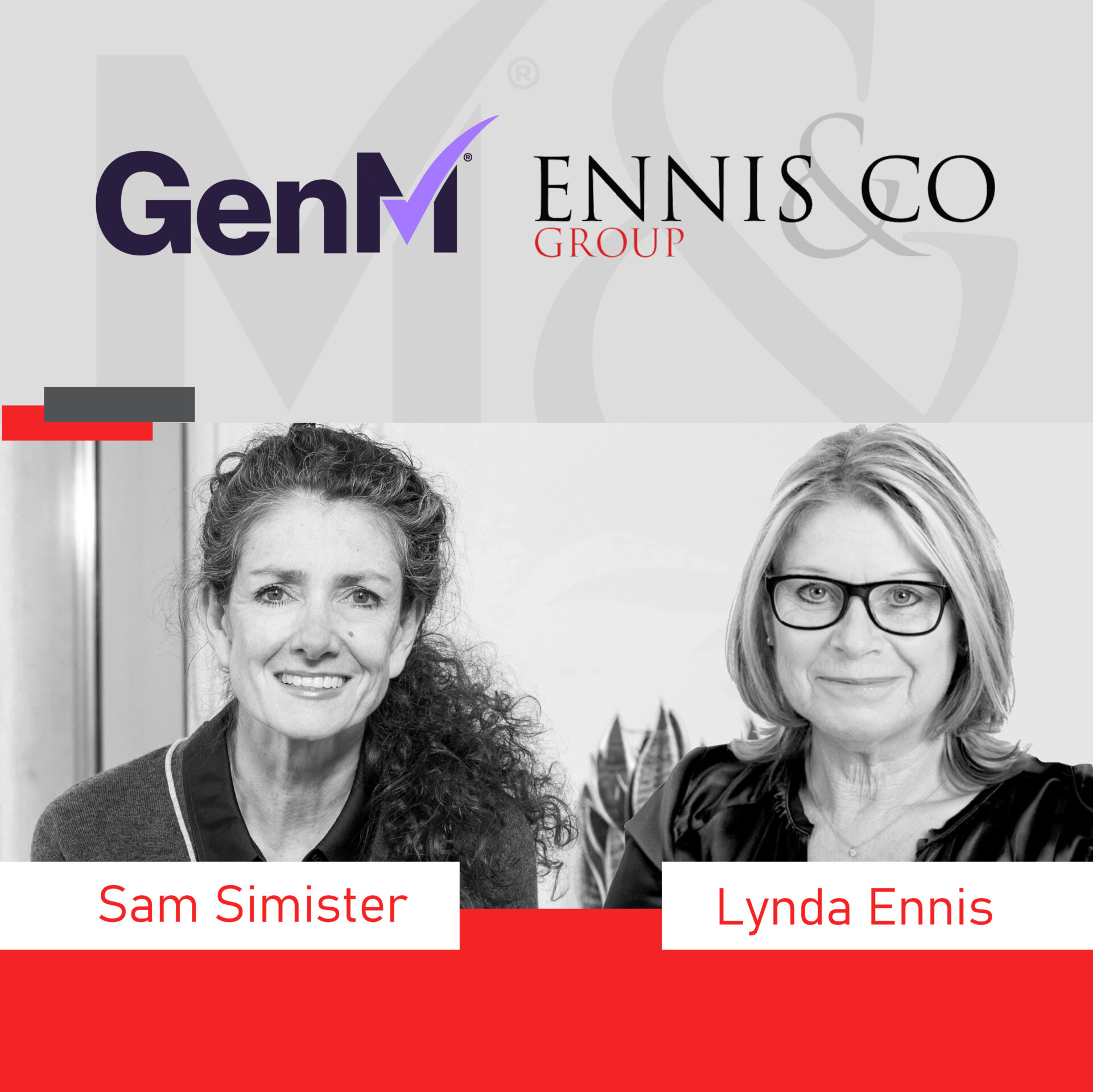After a year of extraordinary challenges for the automotive and mobility sector in the wake of the global COVID-19 pandemic, it’s heartening to hear that the diversity and inclusion agenda continues to go from strength to strength across our industry.
That is the overriding take-home from our recent webinar, Making Diversity and Inclusion a Business Reality, in which distinguished industry leaders, including CEOs and HR Directors, shared experiences and insights about their various responses to the COVID crisis.
This was the third D&I conference to be organised by Ennis & Co, executive search specialists for the automotive and mobility sector, in partnership with Auto Trader. Held on a digital platform due to government restrictions, the event attracted more than 100 attendees from senior levels across the industry and generated some fascinating discussion about the key role D&I strategies have played in navigating the COVID storm.
As with previous conferences, a survey was also conducted among more than 40 organisations across the industry to assess the impact of the pandemic on D&I trends. What aspects were accelerating? What were declining? What were the main changes?
Far from being blown off course by the impact of lockdowns, furlough schemes, home working, rapidly changing consumer behaviour and, in some cases, redundancies and remodelling, D&I has clearly never been so important in the minds of business leaders. In many cases, it has been the key to maintaining business continuity by putting the welfare of employees at the heart of their COVID responses. This is something we had also found as we reflect a year on from our very first original Ennis & Co publication: COVID-19: Ways of Working in the Mobility Industry released in June 2020, as well as our follow up publication: 2020: The year that changed everything: diversity and inclusion leaders within automotive and mobility
For example, we have seen changes to business practices such as flexible and hybrid working have opened up new opportunities to broaden the diversity of the workforce, while the focus on individual wellbeing and mental health has led to big advances in employee engagement and satisfaction. In other words, COVID has actually proved to be a catalyst for positive change.
As someone who has long been a passionate advocate for D&I in automotive, such insights leave me more convinced than ever that an effective D&I strategy is fundamental to promoting a positive company culture and brand and ultimately driving business success.
Many thanks to all the panellists, contributors and attendees for all of your incredibly valued insights. It is humbling to belong to an industry in which so many busy people are able to give up their valuable time to share their learnings and experiences.
In that spirit, I’m delighted to share the key survey findings from this year’s event, and some highlights from the panel discussions that provide a snapshot of the range of D&I initiatives taking place across the board.
Warmest regards,
Lynda Ennis
Founder of Ennis & Co
Highlights from our 2021 Making Diversity and Inclusion a Business Reality survey:
More than 40 organisations were surveyed from across the automotive industry, including manufacturers, retailers, suppliers and trade bodies. The research found that:
- The number of organisations describing D&I as ‘very important’ now stands at 80%, compared to 78% in the 2019 survey and 75% in 2018.
- The primary D&I objective cited by organisations was to ‘contribute to achieving business results’. In the two previous surveys, the main objective was ‘attracting and retaining the best talent’.
- Despite (or maybe because of) the challenges of the pandemic, 50% of organisations said they had made either ‘very good’ or ‘excellent’ progress on D&I in the past year – a big rise on the 28% reported in 2019.
- 85% of organisations said the pandemic had pushed D&I further up the agenda at senior level, with many taking the opportunity to revamp outdated HR policies.
- Understandably, the HR function most affected by the pandemic in a positive way was ‘ways of working’ (e.g. remote working or flexible hours), with 79% of organisations embracing this change. Employee engagement and individual wellbeing also scored highly.
- The HR function that suffered the most negative impact during the pandemic was training.
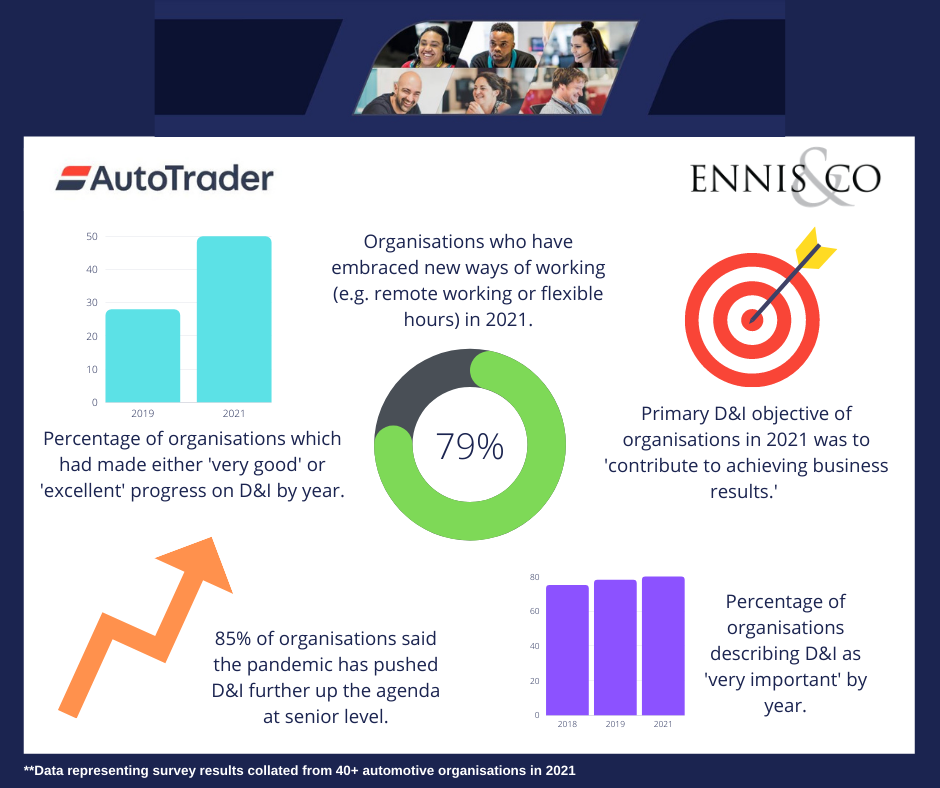
Perspectives from our Making Diversity and Inclusion a Business Reality event panellists:
Laura Haskins, HR & Academy Director, CitNOW:
“Gender is an important topic, but our approach is not about any particular group. The heart of our approach is about creating an inclusive culture to help progress the CitNOW journey, and valuing our people as individuals.
“However, during the pandemic, we did pay particular attention to our working parent group, which makes up over half of our workforce. The concept of work-life balance is not a new one, but with additional factors such as self-isolation and bubbles, it can feel overwhelming for them.
“Working parents were given additional paid time off to support tough home-schooling times within CitNOW. They were also given education on wellbeing as a working parent, and we introduced flexi-time programmes and supplied forums for people to chat and support each other during difficult times.
“We also modelled flexible working at board level, which I think is really important. While nobody gets the balance right 100% of the time, what is important is creating this culture and environment which supports these parents.”
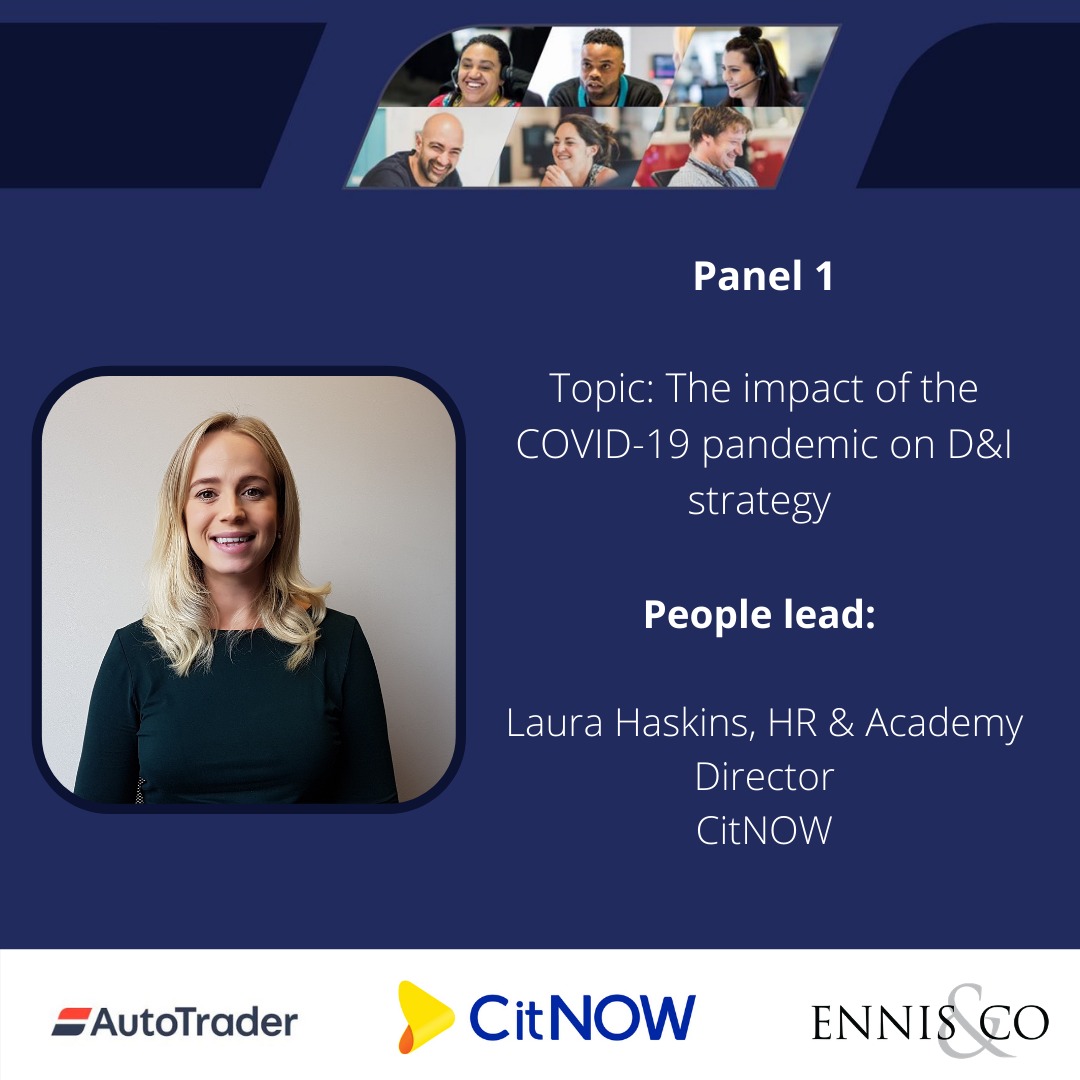
Mandeep Dhatt, Executive Director HR, McLaren Automotive:
“A good thing which has progressed out of the negative experience of COVID-19 has been the acceleration of ‘hybrid working’. More women have entered the workforce and teams than in previous years, likely due to the change in mindset about where you need to do your work from. In reality, we can work from home for some of what we need to do as an organisation.
“We have been able to impact the diversity of our organisation and that sense of inclusion. It is about working with partners who are true to us as an organisation and with no bias in the way we attract, whether that is in the job description or how we describe the organisation, or the ideal candidate.
“Having partners like Ennis & Co, for example, has helped us to look beyond the borders of where we would typically look to recruit to ensure all are included, particularly within the ‘niche’ and sometimes difficult subject type areas. It means we can change and impact the thought diversity, which only means we do better as a collective.
“The subject of mental health and wellbeing is also something that has always been talked about – but we are focusing on it more robustly now. We have more mental health ambassadors than ever before, with representation within the senior leadership team, too.”
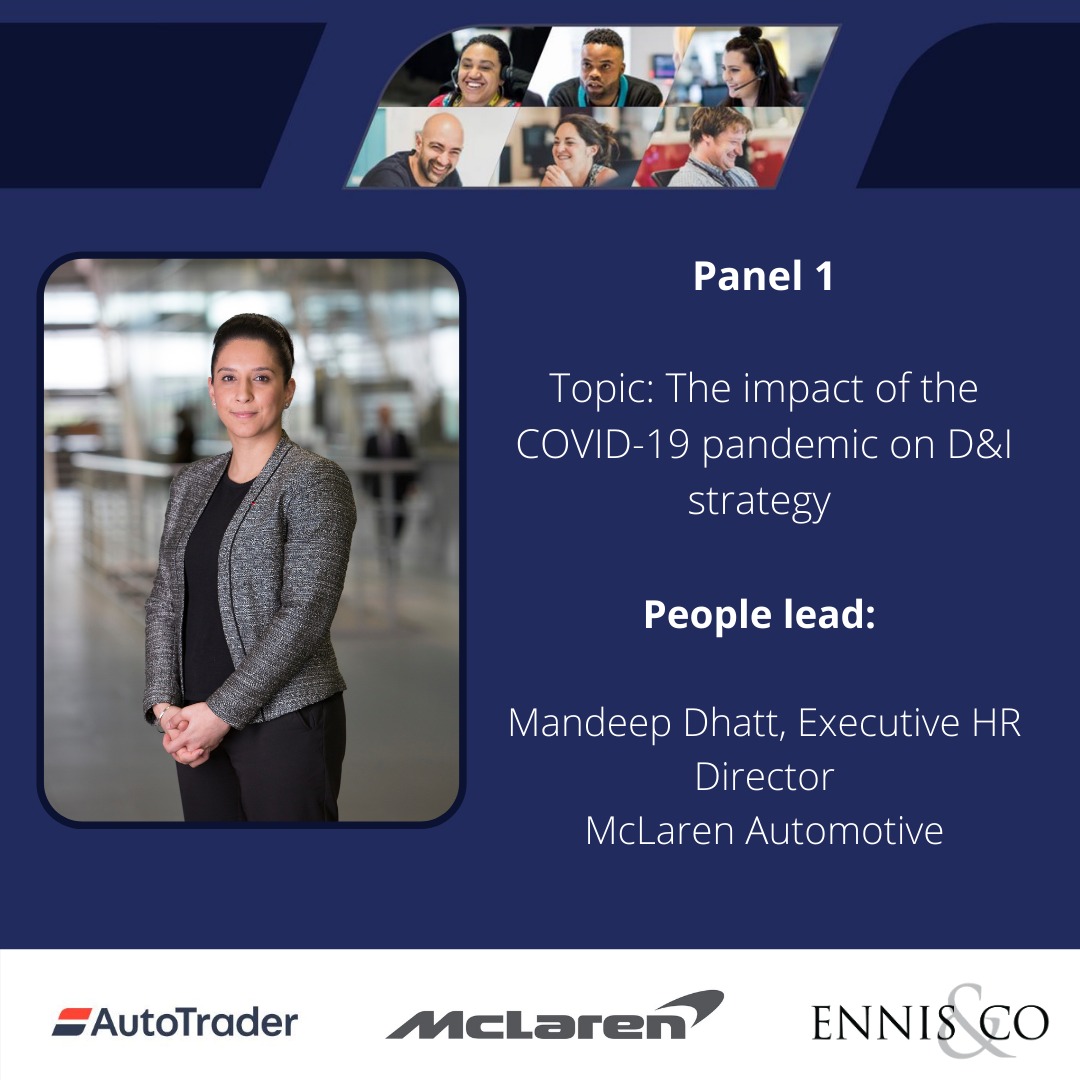
Alison Fisher, HR Director Cox Automotive International:
“Prioritising the health, safety and wellbeing of our employees continues to be our No 1 priority. I believe organisations who have stayed true to their values, their people and their guiding principles will emerge from the pandemic much stronger.
“There was no rulebook for what happened. All eyes were on HR to lead. We quickly became experts on furlough overnight, furloughing about 80% of our people. The most important focus during these early stages was communication, weekly check-ins with team members, getting messages out there and ensuring something was happening.
“Employees were looking for reassurance from leaders, which was lacking in the media. Communication has been paramount, with people wanting reassurance and certainty. HR was swanlike – unflappable on the surface but paddling wildly beneath. Our job was to keep everybody calm.
“For me, the support of the senior execs, and the fact they have been allies in creating an inclusive business by how vocal and visible they are, has been incredibly key. It is not about words, it is the actions you need to see – the willingness of senior leaders to learn consistently, conveying that we all need to educate ourselves. It is good to see from a senior leader a willingness to learn and to accept that they do not know all the answers. Also, senior leaders sharing their vulnerabilities and learning alongside team members is powerful.”

Dr Astrid Fontaine, Member of the Board for People, Digitisation and IT, Bentley Motors:
“Automotive is changing at an unprecedented speed, and in order to address changing consumer needs and desires we need to make sure we are providing and manufacturing diverse products, full of solutions. It is important to show we understand the consumer culturally and their individual demands, so the workforce therefore needs to be as diverse as possible to bring these different views together. Having diverse views is not enough, we need a diverse culture.
“We take a pragmatic stance, looking at what we can change from a managerial perspective and what our people can change themselves. Our colleagues have formed their own networks – Be Proud (LGBTQ+), Be Inspired (gender diversity) and Be United (BAME). These are self-grown, organic networks, and each board member sponsors one of them to understand what is holding us back from their point of view.
“There is currently a lot of focus on recruitment and succession planning, but not so much about the people and what they feel when they come to work. We therefore try to emphasise how we speak to each other, and there is a lot of training on this now, so that people bring their whole self to work. This includes training on unconscious bias to understand others and how to speak to each other.”
There are therefore four major themes within Bentley: outreach towards finding diverse talent in schools and universities, a focus on recruitment of diverse candidates, companywide mentoring for these diverse candidates to help them progress, and training of all colleagues to remove unconscious bias. We cover these different themes across all our networks.”
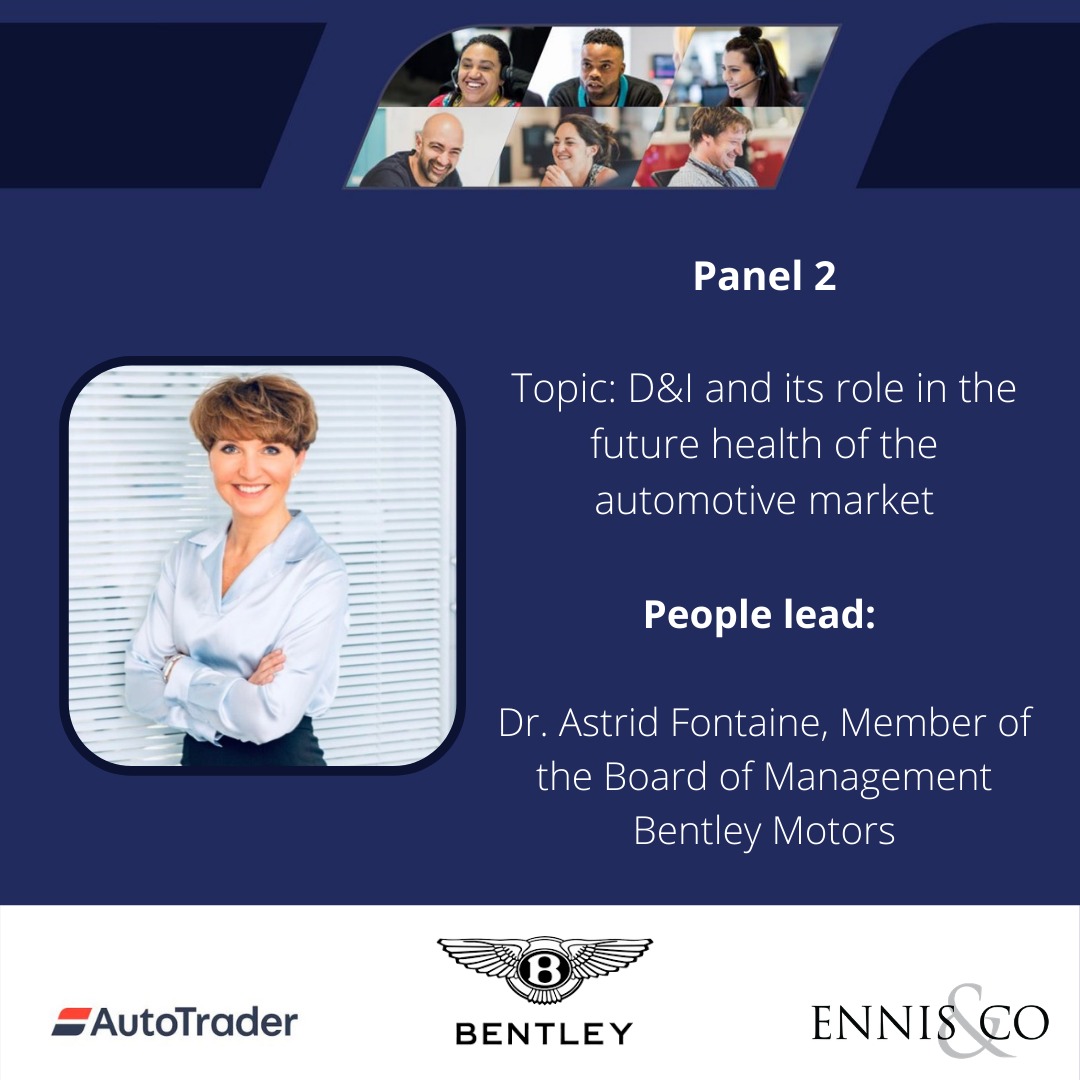
Geraldine Ingham, Global Category Director Automotive, Facebook:
“D&I is everywhere within Facebook. For example, Mark Zuckerberg runs a weekly Q&A where anyone within the organisation can ask him a question. There is also a Chief Diversity Officer in place to ensure D&I is top of the agenda. Facebook runs around groups and communities, whether this is around gender or other elements of diversity, and there are lots of groups which enable you to feel part of the organisation.
“There is a focus on leading with empathy and putting people first. While we are a sales organisation, during COVID there was a focus on building the relationship with clients and understanding their situation. Sales targets were taken away and bonuses were guaranteed, so we could focus on clients’ wellbeing, which was definitely appreciated by them.
“There was also a global companywide shutdown for three days in recognition of the difficult time brought by COVID and we also offered an additional 10 weeks of leave for caring responsibilities. On a cultural and empathetic level, people having their children appearing in the backgrounds on Zoom was totally embraced and understood. It is all about showing empathy, and you get so much more out of people this way.
“I think working from home has always been a debate, but due to COVID working from home has now been proved as effective. I think that by trusting your team, being empathetic, leading by example, you really do make a difference. It is not about presenteeism, it is about doing the job.”
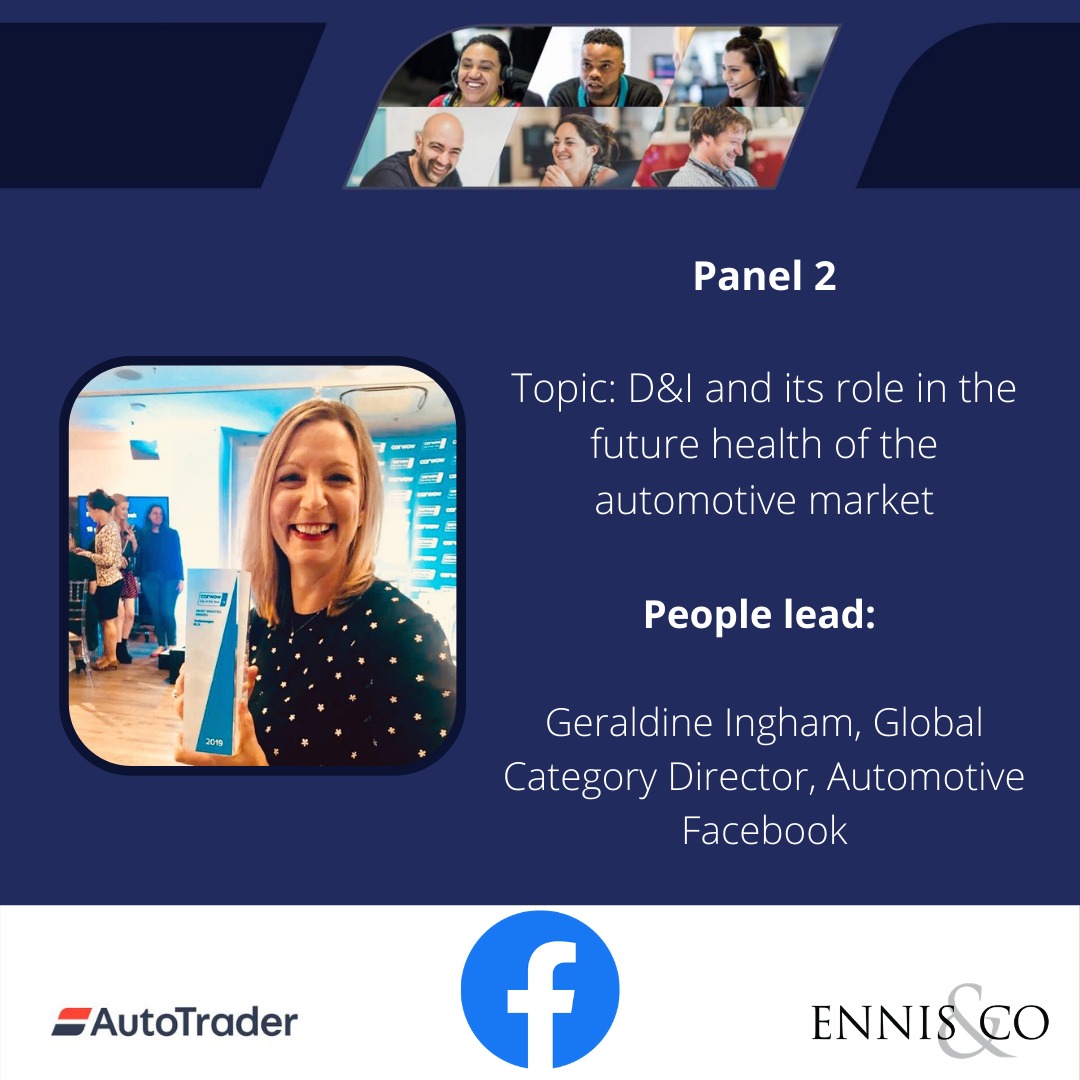
Andrew Humberstone, Vice President & Managing Director, Nissan Motors GB:
“There is definitely an outdated perception of the automotive sector about the white male car dealer, which can prevent diverse candidates applying for roles. This stereotype absolutely does not represent our industry anymore. Just as phones have updated, so has automotive. We are now creating intelligent mobility solutions packed with as much technology as our homes. When you look at opportunity within the industry, there are rich and varied career paths, including design, technology and so on.
“Our difficulty is in reaching these talented and diverse candidates and highlighting the opportunities. There are challenges in recruitment, but also in retention and progression at the senior executive level. This is one of the reasons we sponsor and participate in D&I focused initiatives which showcase the diverse opportunities that exist in our business which are open to everybody.
“We need to address and replicate what customers want, as we are a customer-driven business. This includes business integration, brand image etc, all under the umbrella of employee engagement. We set up a D&I council of people across the business who are working on a strategy with the HR team to look at areas to improve. This does not just include gender diversity but all aspects of inclusivity to ensure the workplace is welcoming to all people of every background.
“There is also the talent and innovation front to consider; how to attract and develop this diverse talent through the organisation, increasing cultural engagement and creating a culture of respect. Organisations need to update their management style to understand the emotional economics of the business.
“The days of having a controlling, Machiavellian leader are obsolete. You need to look at every employee and member of the management team in your business and work with them and engage with them to understand what motivates each specific individual.”
